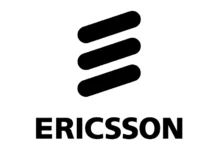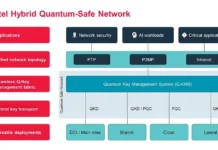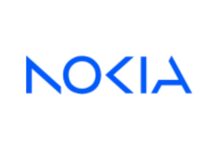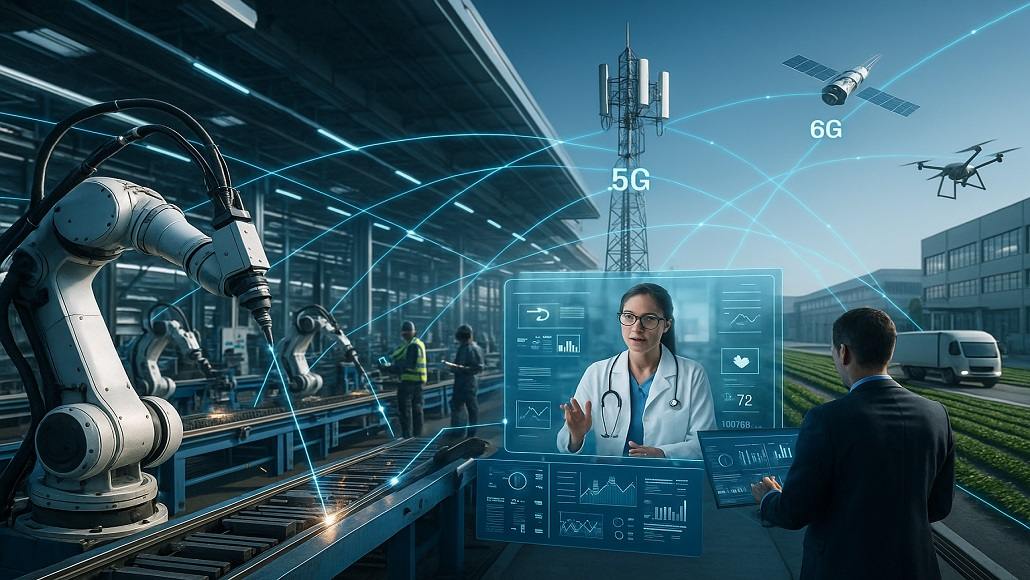It is well to be noted that the digital transformation that is sweeping through industries today happens to be characterized by unprecedented connectivity along with communication capabilities. At the forefront of this evolution happen to be 5G and upcoming 6G technologies, which have huge potential to redefine the spectrum of communication and data exchange. Teamed with communications platform as a service (CPaaS), these technologies are all set to revolutionize B2B communications, especially in the realm of Internet of Things applications. This article discovers the major effect of 5G and 6G-backed CPaaS when it comes to driving IoT-centric B2B communication by reflecting real-world applications throughout the numerous industrial sectors.
What is CPaaS in the context of 5G and 6G?
Communication platform as a service (CPaaS) happens to be a cloud-based platform that helps businesses to integrate communication capacities within their applications without any kind of heavy infrastructure costs. CPaaS happens to provide APIs when it comes to video, voice, and messaging, as well as other communication features, thereby ensuring the businesses elevate their customer engagement and, at the same time, streamline their internal communications. With the rollout of 5G and deployment of 6G, the CPaaS capabilities are all set to expand in a very significant way.
It is worth noting that 5G technology offers incredible enhancement in bandwidth, connectivity, and latency, which are very critical for IoT applications that depend heavily on real-time data exchange. As per the Global System for Mobile Communications (GSMA), 5G is all set to account for almost 1.7 billion connections by 2025. With the promise of even faster as well as more dependable connectivity, 6G is anticipated to usher in a new era in which communication can seamlessly integrate along with VR, AI, and AR applications, thereby further elevating and enriching the capabilities of CPaaS.
IoT-centric B2B communication – the role of 5G and 6G
The spectrum of B2B communication is evolving rapidly, and the integration of 5G as well as 6G technology within CPaaS happens to be paving the way for innovative solutions within IoT-centric communication. One of the major advantages of 5G happens to be its ultra-reliable low-latency communication (URLLC), which is very necessary for industries that depend heavily on real-time data processing as well as decision-making.
For example, in manufacturing, the usage of IoT devices, which are powered by 5G, enables real-time tracking of equipment as well as predictive maintenance. Companies can leverage CPaaS in order to create solutions that help with instant communication between machines, operators, and management, thereby fostering a proactive approach when it comes to maintenance as well as reducing the downtime. As per a report by McKinsey, companies that adopted IoT solutions can anticipate decreasing their maintenance costs by almost 30%.
Moreover, the logistics sector is also benefiting from 5G-enabled CPaaS solutions. Fleet management systems can make use of real-time data in order to optimize their routes, track vehicle conditions, and also offer updates to clients on their shipment statuses. The integration of CPaaS enables logistics companies to go ahead and communicate vital information in an instant way, thereby enhancing the overall efficiency as well as the customer satisfaction index.
What are the real-world applications when it comes to 5G- and 6G-backed CPaaS?
As industries start to harness the combined power of 5G, 6G, and CPaaS, there are many noteworthy applications that are emerging within the healthcare sector. For instance, patient tracking has taken on a new significance. IoT devices can go ahead and relay real-time health data to healthcare providers by ensuring timely responses to patient requirements. By way of integrating CPaaS, healthcare providers can help with instant communication between medical professionals as well as patients, enhancing patient care while at the same time decreasing the healthcare facilities’ strain.
One of the prominent examples of this is the usage of connected devices within telemedicine, where real-time communications is backed by 5G networks that, in turn, show high-quality video consultations. The World Health Organization happens to estimate that telehealth services can save healthcare systems almost an average of 25% in costs by way of decreasing unnecessary hospital visits.
Apparently, in agriculture, smart farming applications, which are powered by 5G as well as CPaaS, are also driving efficiency and sustainability. IoT sensors can track soil conditions, crop health, and weather patterns, enabling the farmers to make decisions that are based on data. By way of leveraging CPaaS, farmers can get alerts as well as communicate with agronomists in an instant way and hence improve their crop yields and also resource management. As per a study by the United Nations, global food production must increase by almost 70% by 2050 so as to meet the growing population demand. The integration of 5G and CPaaS can help achieve this goal by way of helping with more precise as well as efficient farming practices.
6G and CPaaS—the future of B2B communication
It is well to be noted that the anticipated rollout when it comes to 6G technology promises to take IoT-centric B2B communications to heights that are unimaginable. With forecasts indicating that 6G may offer data rates that may reach up to 1 terabit per second and latencies of under 1 millisecond, the potential applications are massive. CPaaS is most likely to evolve so as to support a range of new services like holographic communication as well as advanced analytics, which are fundamentally changing how businesses can interact with each other as well as even function.
As the industries increasingly go ahead and adopt these technologies, the demand when it comes to scalable and agile communication solutions is all set to grow. Companies that make use of 5G and 6G-backed CPaaS are likely to have a competitive advantage and will be able to innovate in a very fast way, and at the same time, they can also respond to market changes with a lot more agility.
Conclusion
The synergy between 5G, 6G, and communications platform as a service (CPaaS) is paving the way for the future of IoT-centric communication. As industries continue to grow and explore as well as execute technologies, the potential when it comes to innovation as well as efficiency is all set to only expand further. The real-world applications Throughout manufacturing, healthcare, logistics, and agriculture, go on to illustrate the transformative effect of these advancements by empowering businesses to enhance operations and at the same time elevate customer experiences to a new level. The journey towards a completely connected future driven by 5G and 6G-backed CPaaS is just starting. Organizations that recognize and take into account this shift are going to be well positioned in order to thrive in the digital landscape, which is increasing, thereby realizing the full potential when it comes to IoT in revolutionizing B2B communication. As the industry evolves, staying abreast and informed as well as adaptable is going to be necessary in order to harness the opportunities that lie ahead.




















